20 Types of Spring Flowers (with Pictures)
-
Kristin Hitchcock
- Last updated:
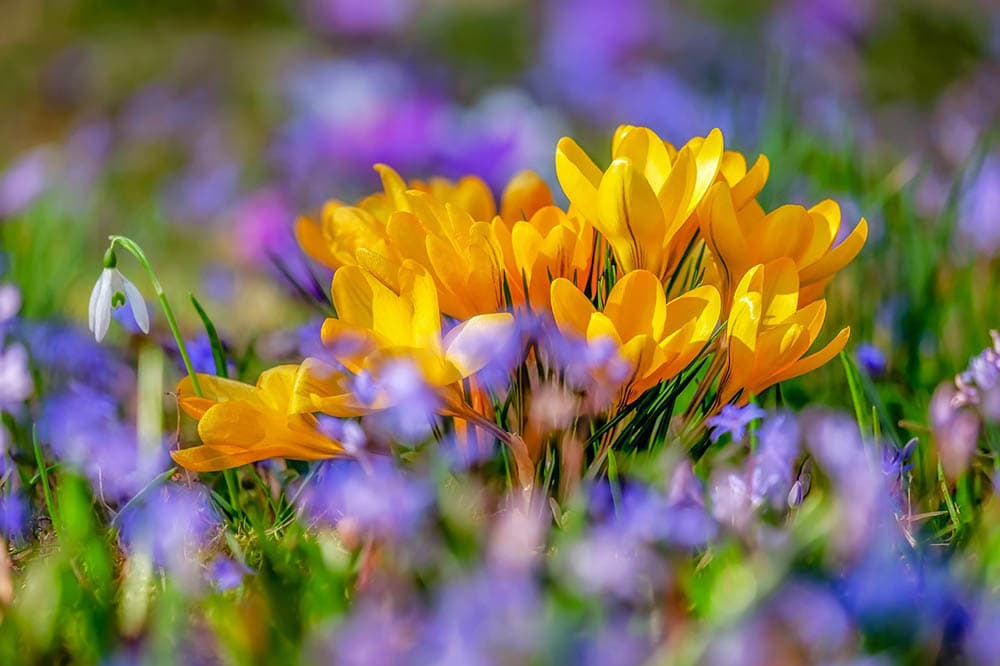
When creating a spring garden, flowers are absolutely necessary. After all, spring is known for its beautiful blooms.
However, you can’t pick just any flowers for your garden. There are hundreds of possible spring flowers out there for you to choose from, and narrowing your choices down to just a few can be challenging, if not impossible.
To help you out, we narrowed down all the spring flowers out there to 20 that you can select from. These are the unique flowers that are easiest to utilize in landscaping and gardening. While there are countless spring flowers out there, not all of them are appropriate for regular gardening. The ones we list below are.
The 20 Types of Spring Flowers
1. Crocus

Crocus flowers are some of the most popular and are considered the spring flower. You can’t really have a spring flower garden without them.
They are rated for hardiness zones 3 to 8, which makes them appropriate for a wide range of areas. They are also available in a range of colors, which many people like to mix. Of course, you can just select one color if you like. Their foliage is narrow and looks a lot like grass.
These flowers spread very quickly, creating a carpet of color over the years. They prefer full sun, but they can also handle partial shade. They need rich soil to grow best. However, they are also very reliable and frost-tolerant. They are not hard to take care of.
2. Pansy
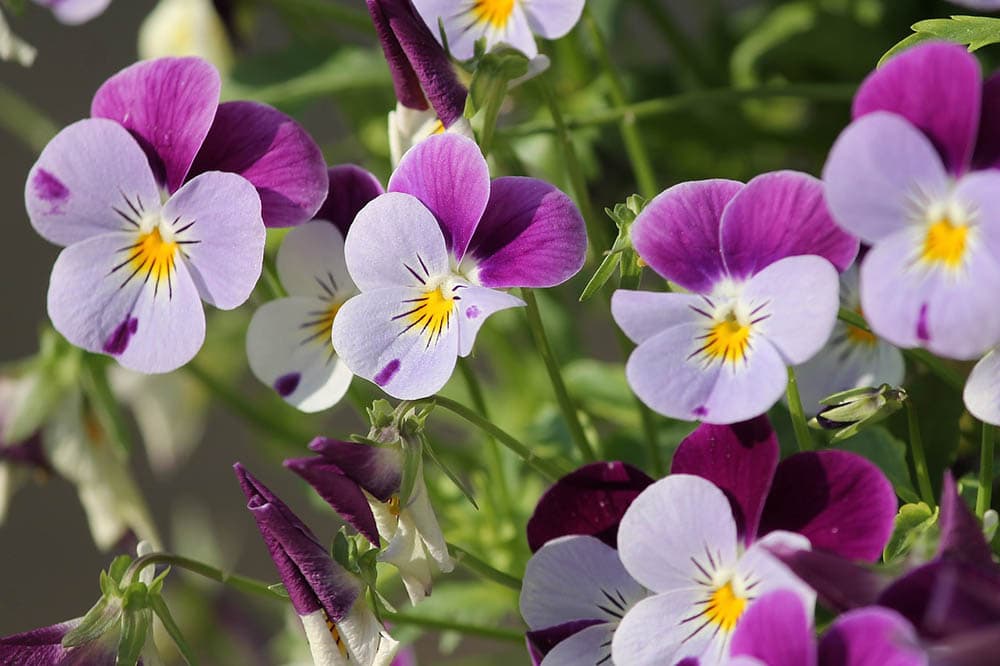
Pansies are widespread and available in most areas. They come in a variety of different colors, ranging from bright yellow to white to lavender. They can handle the cold, so they are perfect for colder areas or those who want to plant in early spring. They are one of the first flowers to bloom in most cases.
However, these flowers do not like the heat. Therefore, they tend to die quickly when the head arrives. Some varieties come back in the fall, though.
They do require full sunlight to grow properly. They require at least 6 hours of sunlight to thrive
3. Daffodil
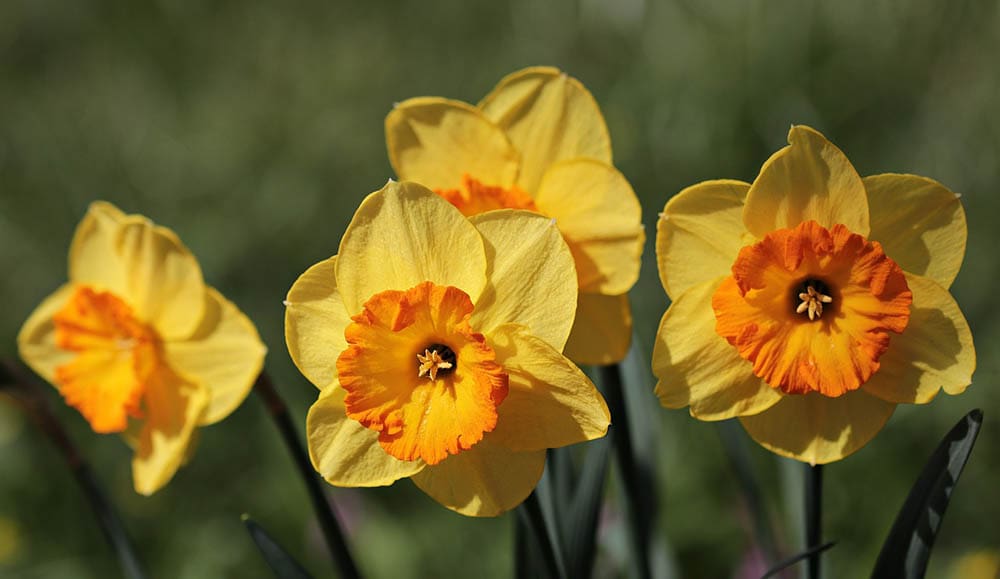
The daffodil is known for its bright yellow color and trumpet shape. There are three different versions of these flowers, though, and they don’t all fit this description. There are more daffodils available than you might think.
These flowers usually grow in clumps and spread quickly. They usually are not eaten by native wildlife, so they are a great option for those who tend to have lots of animal visitors.
They can handle partial shade, but they do prefer full sunlight. They need well-drained soil as they are quite prone to root rot. Rich soil is a must, or they may not take it.
4. Primrose

Primroses are perennials and one of the earliest flowers to bloom in the spring. They are more delicate than other flowers, but they can handle cold and frost better than most.
There are hundreds of different primrose species out there. When planting, look for options that will survive the winter in your areas, as these flowers will come back year after year if you choose the correct ones.
These flowers will tolerate part sun, so they are a great option for those in shadier areas.
5. Dwarf Iris

In zones 5 to 9, the dwarf iris is a smaller flower that will bloom fairly early in the season, making it one of the best spring flowers. Plus, these flowers bloom very quickly after they start blooming. You don’t have to wait in the bud stage long.
They can be planted in full to partial shade and in average soil. They don’t need the rich soil that other flowers require. These plants are true miniatures, though; they only reach 6 to 8 inches.
Therefore, they may be best kept in raised containers where they are more easily visible. Otherwise, you may completely miss them.
6. Lenten Rose
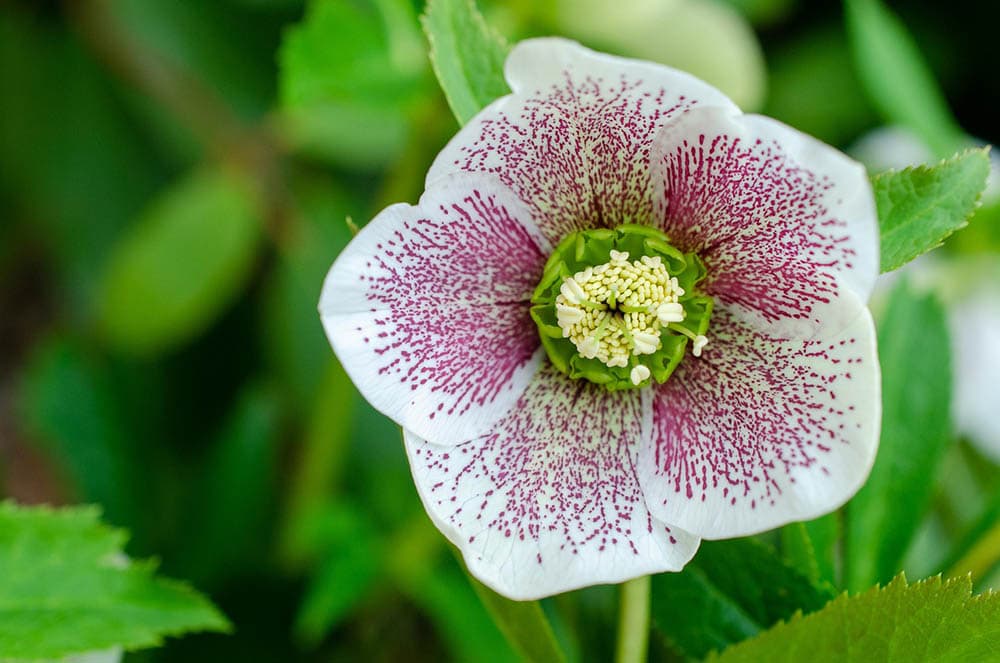
If you’re looking for a unique flower, the Lenten Rose is a great option. They appear in late winter and stay through the early spring. They can be considered “winter” flowers, though they will likely remain until the weather gets hot.
Unlike many roses, these flowers stay on the ground. Plant them and then give them a few years to settle in. After that, they are quite tough.
Their blooms may appear fragile, but they are tougher than they first appear. They spread quickly and can quickly cover a large area. They do prefer shaded areas – making them one of the few flowers that don’t need much sun.
7. Glory of the Snow
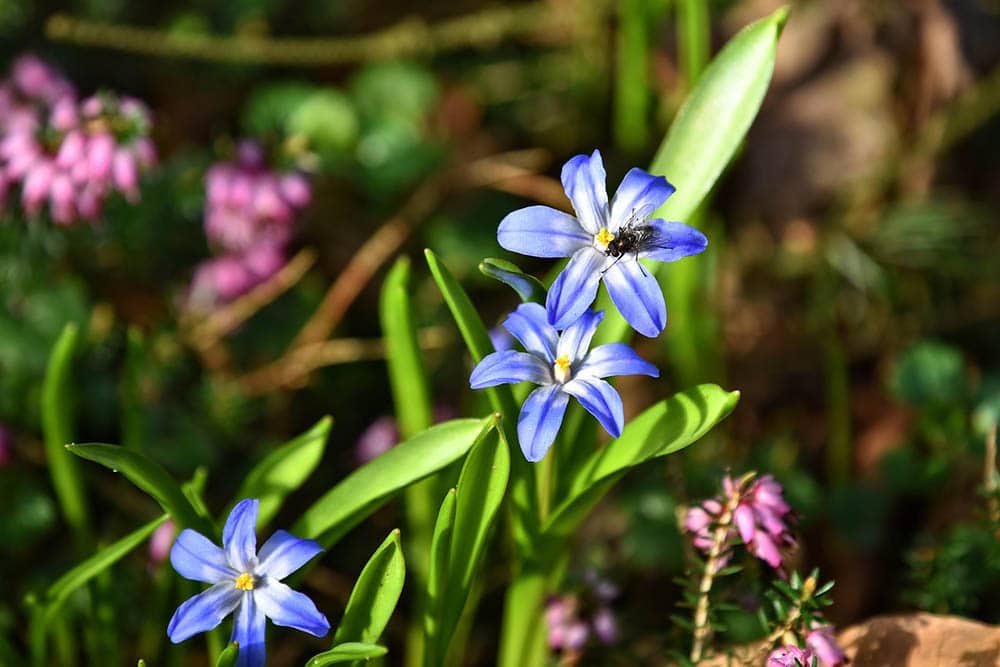
As the name suggests, these flowers don’t mind colder weather. They grow in a clumping fashion with their star-shaped flower pointing outwards.
These flowers do need partial shade at the very least, as well as well-drained soil. They are best suited for zones 3 to 8. They can stay pretty short, but some of them can grow up to a foot tall depending on the exact conditions.
They are famously utilized for planting under black walnut trees, which produce toxic chemicals into the ground around them. These flowers are completely immune to it, making them a good option to plant en mass under these trees and other similar ones.
8. Tulip
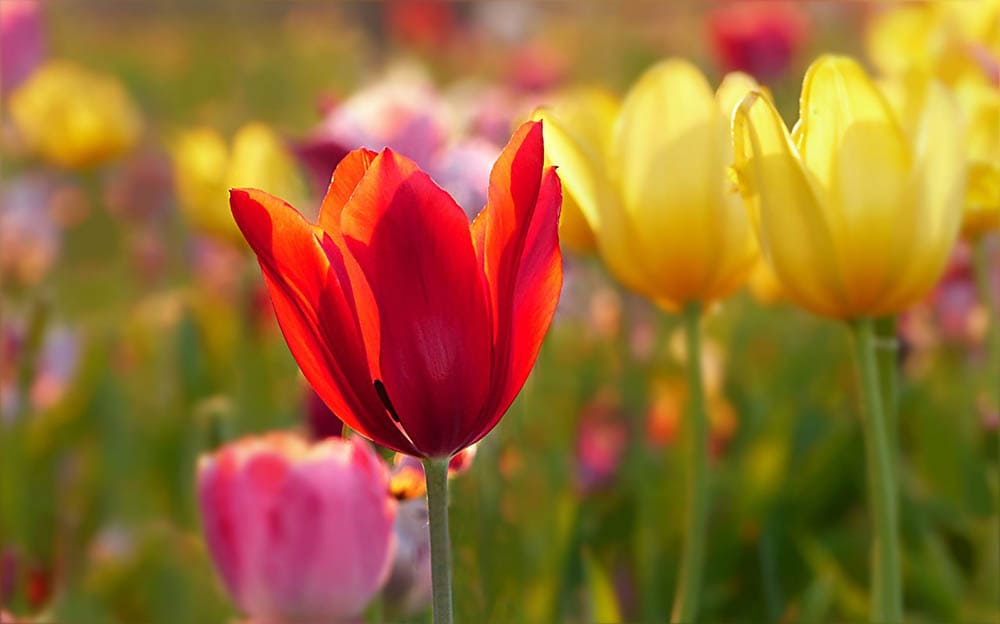
Even those who aren’t gardeners know what a tulip is. These flowers come in many different colors and shapes, with new varieties being created all the time. You can get them with one flower per stem or with multiple flowers per stem. It just depends on what you purchase.
They are technically perennials. However, they don’t bloom brilliantly in the second year, so they are often treated as annuals. They are usually planted in the fall and then bloom in the following spring.
However, they are very tasty for rats, so it can be difficult to keep them safe over the winter. You may need to plant them in pots and then transplant them later. Other people plant them underneath less tasty bulbs, like daffodils, as this seems to keep the rodents away.
Ideally, full sun is necessary for them to grow properly.
9. Grape Hyacinth
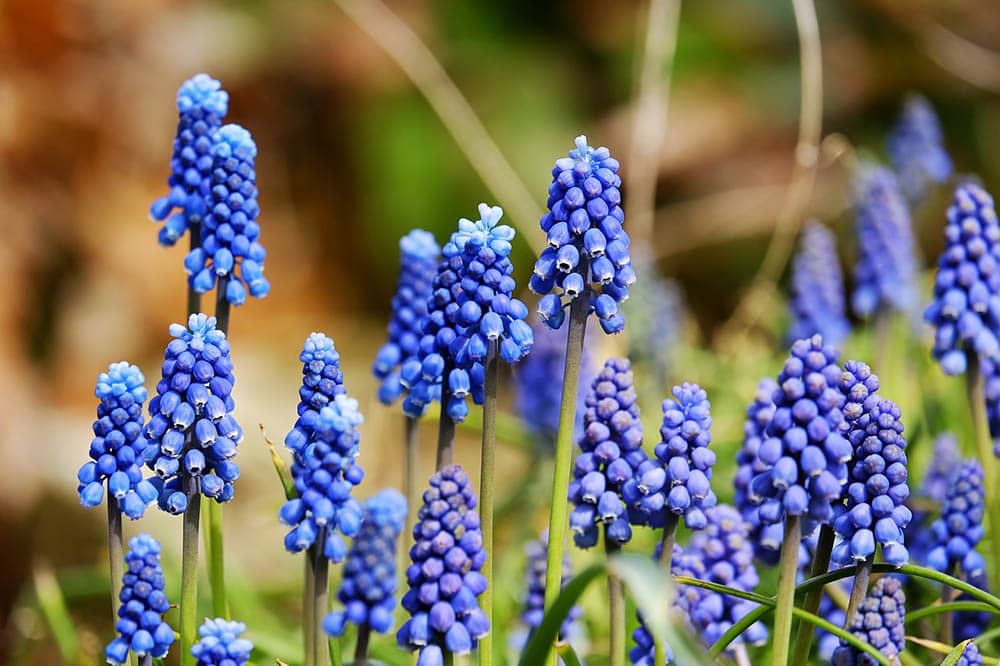
These fragrant flowers are truly unique. They create very small flowers that look a lot like bunches of grapes, hence their name. They are blue-purple in most cases, but they are also available in other varieties, though a change of color can make them stop resembling grapes quite as much.
When planted properly, these flowers create a massive monochromic display. They are also great for flower boxes, borders, and containers. They aren’t terribly large, so you can often plant them in smaller places. They look great when interplanted with similarly small flowers.
10. Columbine
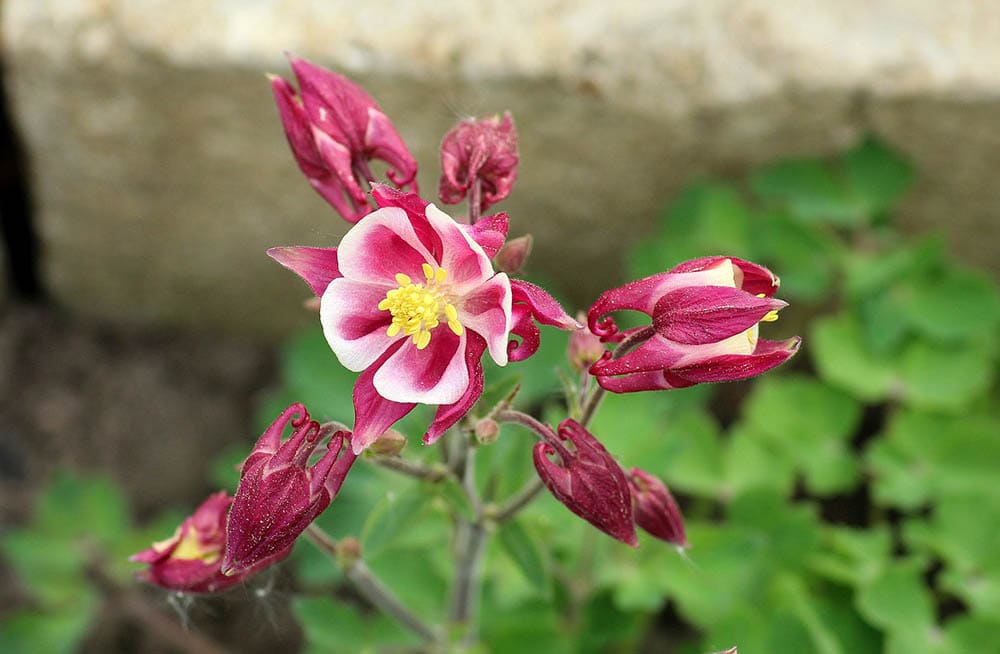
These unusual flowers are a great option for late spring. They tend to bloom after other flowers, so they are a great way to bring color when it is too late in the season for other varieties.
They look quite exotic usually, though they are available in a few different colorations. They are often much more interesting than other flowers out there, making them a great statement piece or a way to break up monochromatic that other flowers can bring.
These flowers prefer partial sun.
11. Lily of the Valley

This plant is one of the most unique ones out there. They have small, bell-shaped blossoms that can either be white or pink. They are extremely fragrant, with up to 15 flowers on each stem. They can be very beautiful in containers, but they tend to take over wherever they grow, so it is best not to plant them directly in the ground.
However, this flower is also known for being extremely poisonous. They contain chemicals that affect the activity of the heart, potentially stopping it in some cases. While people usually don’t go around eating flowers, they can be a danger for plants and small children.
All parts of the plant of poisonous.
12. Sweet Alyssum
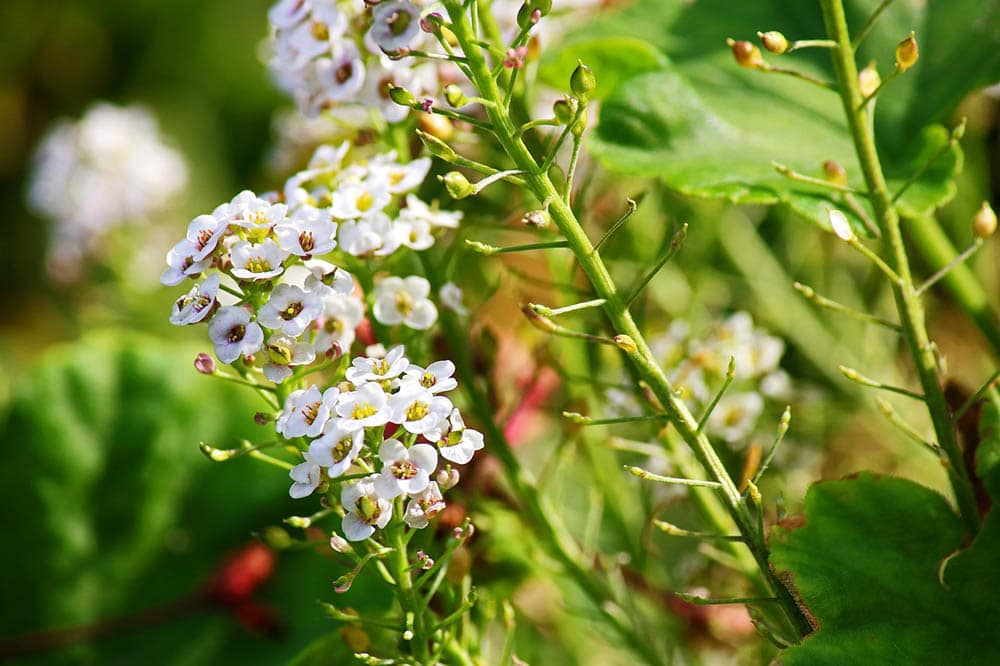
This very fragrant flower grows a bit like a bush. It provides color all season line, being equally tolerant of heat and heavy frost. As long as they are given full sun, they tend to thrive.
These flowers do come in a variety of different sizes and are often used as tumbling plants. They look great when hanging out of boxes or tumbling over a well.
13. Siberian Squill

With 1 to 3 buds on each stem, these flowers tend to have a very low profile. They are often planted alongside other flowers to provide some background floor. They only reach three to six inches, making them “miniature” flowers by many descriptions.
They prefer full to part shade with average soil. They are prone to root rot, so they need well-drained soil.
Mass planting is required for maximum impact, as these plants are easy to look over in other cases.
14. Lupine

These tall spikes are a beautiful addition to your garden when you’re looking for something new. They do best when planted in the background, though, as they can grow up to 40 inches tall. They prefer full sun, though they can do okay with some shade.
These plants are on the larger side, so keep that in mind when planting them.
15. Snowdrop

Snowdrops are named such because they can live in colder conditions and are occasionally blooming when snow is still on the ground. Their bell-shaped flowers droop downwards, which also probably contributes to their name. Their leaves resemble rather thick grass.
They prefer full sun but will grow in partial shade in some cases. They are not particularly picky about their soil as long as it drains well. This hardy flower naturalizes to zones 3 to 8, where they can reach from 3 to 7 inches.
These flowers can be used for a variety of different situations. You can plant them in beds and containers, but they also look great when planted en masse in the early spring.
16. Trillium

This native plant can often be found growing in woodlands, where it produces a single flower on a bare stem. They thrive in partial sun and rich soil.
While this plant is perfect for woodland areas, it does die very quickly after it blooms. Therefore, they do not last long. However, they tend to colonize an area, albeit very slowly. They won’t take over an area like some other plants, though they do have some staying power.
17. Winter Aconite
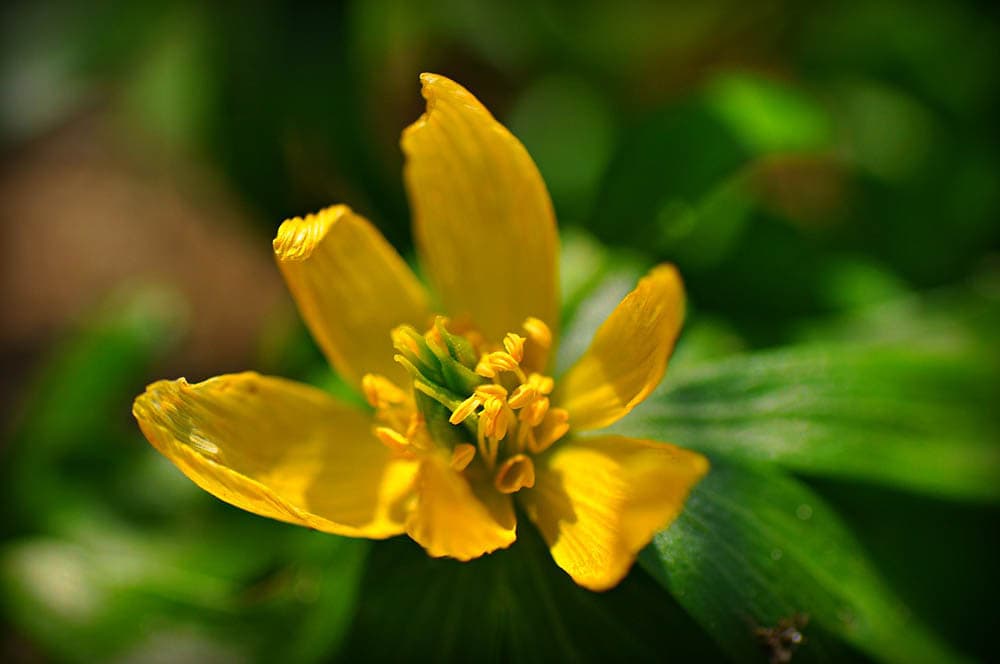
These carpeting flowers are perfect if you want to cover an area in color. They have bright cup-shaped blossoms with deeply divided leaves. They grow from tubers and produce very petite flowers that are best for carpeting. They aren’t particularly impressive unless you plant a lot of them.
If you want them to grow correctly, you must plant them in full sun to part shade. Organically rich soil is a must. They do spread quickly and are immune to many juglone toxins, making them a good choice for black walnut trees.
18. Bleeding Heart
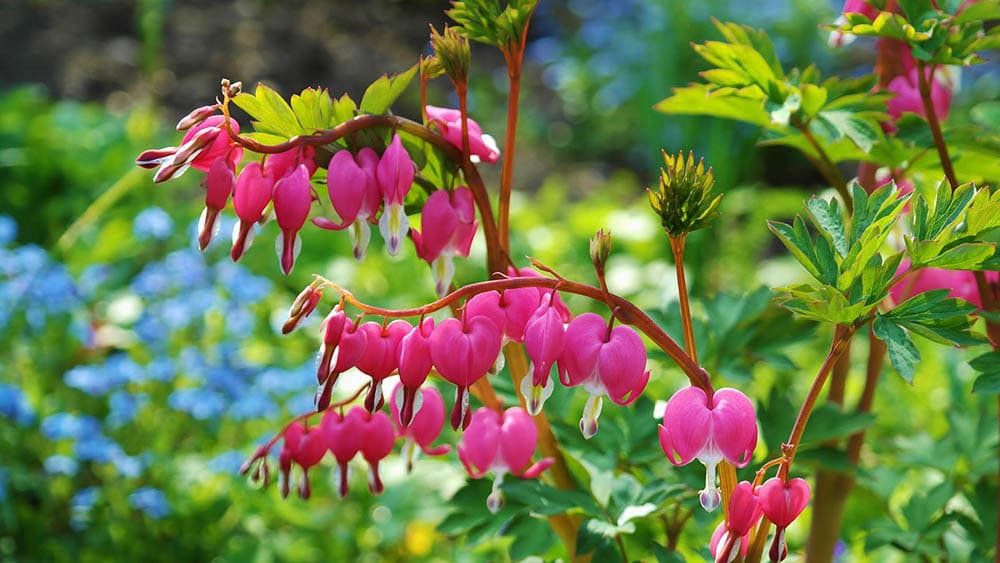
With unique pink and red blossoms, these flowers make a great statement piece in a garden. They have arm-like branches that support quite a few blossoms each.
While these flowers are beautiful, their foliage dies after they bloom. The flowers don’t tend to stay for very long, either.
They need full to partial shade. They do not need any special soil except for good drainage. They do not like wet conditions much.
These flowers are a bit larger, ranging from one to three feet. They have a shrub-like growth, which makes them more eye-catching than they already are.
19. Carolina Jessamine

These vine flowers have trumpet-shaped blossoms that are well-scented. This plant prefers full sun, where it spread easily. It can go across the ground as well as up climbable structures. Their soil should be organically rich and well-draining.
These flowers grow very quickly and prefer warmer areas. They can reach heights up to 20 feet, so they are best for putting on fences or trellises.
20. Dutchman’s Breeches
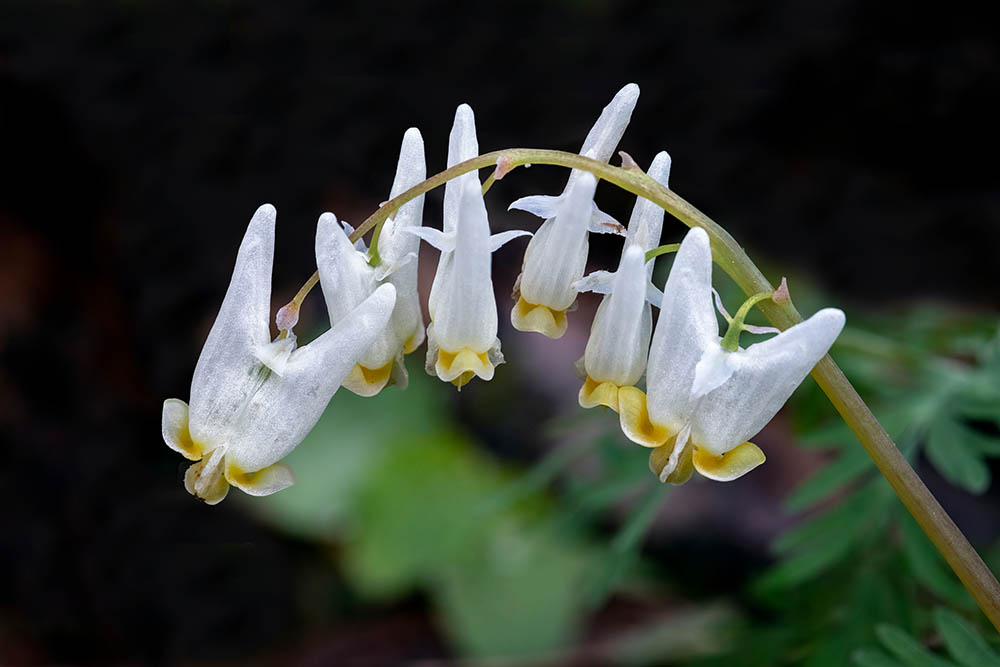
This wildflower has an upright stem and a unique bloom. The small white flowers look like a little pair of upside-down pants and are tipped with yellow. They are a unique bloom that tends to stand out in a garden.
The whole plant seems to vanish shortly after blooming, so these aren’t very long-living plants.
These plants prefer full sun, though they can also grow in partial shade. They can grow in zones 3 to 7.
Conclusion
There are hundreds of potential flowers you could utilize in a spring garden. Above, we’ve mentioned some of the most widely available and easiest to take care of. In all likelihood, you’ll want to utilize a few of these flowers for your garden.
We recommend choosing flowers that are different from each other. Choose a carpeting option and then a statement flower, for instance. You don’t only want unique, taller flowers, just like you don’t want only carpet flowers.
See Also: How and When to Plant Pansies – What You Need To Know!
Featured Image Credit: Pixabay
Contents
